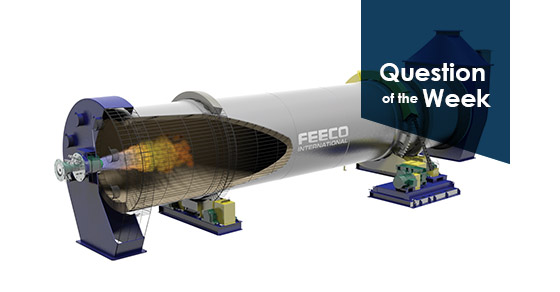Many material characteristics, such as bulk density and specific heat, influence how the material will behave in the rotary kiln, and subsequently, how the kiln must be designed to produce the required results.
The following material characteristics all influence the sizing and design of a rotary kiln.
- A material’s particle size distribution and bulk density can influence of the physical and mechanical features of kiln design.
- Abrasiveness and corrosiveness do not directly affect the kiln sizing, but influence the material of construction.
- Specific heat of the material determines how much energy the kiln will need to cause the reaction.
- Thermal conductivity. The way in which a material transfers heat influences how the kiln will need to be designed around the material.
- Temperature profiles. Performing a Thermal Gravimetric Analysis (TGA) captivates the temperature ranges at which mass loss occurs. This helps to show where (in terms of temperature) a reaction begins and ends.
- Knowing the chemical composition of a material can help predict what exhaust gases will result from the process and what type of gas treatment system will be needed.
For more in-depth information on rotary kiln sizing and design, contact us today!


